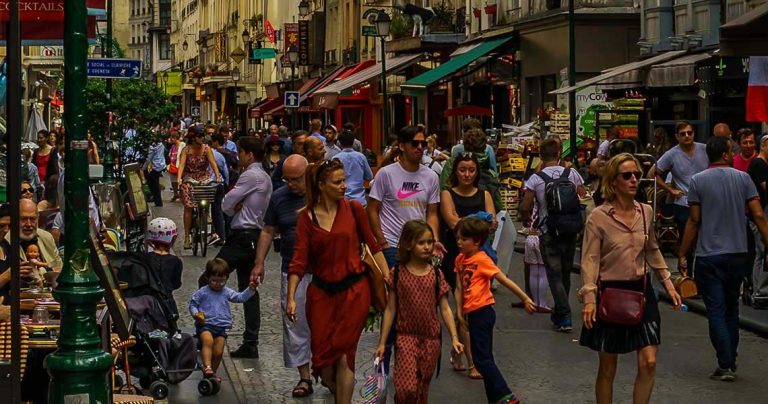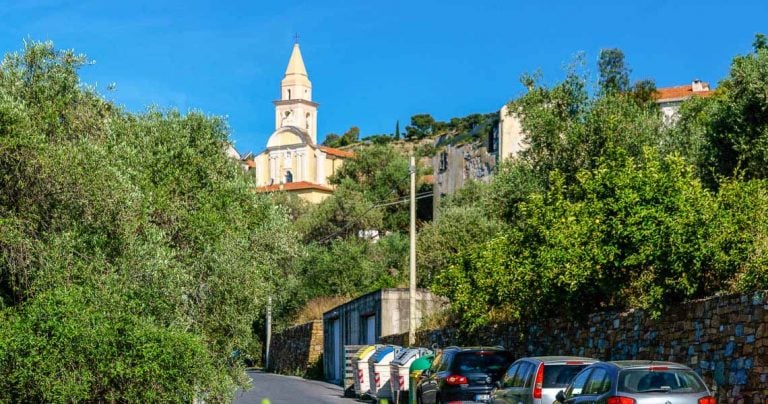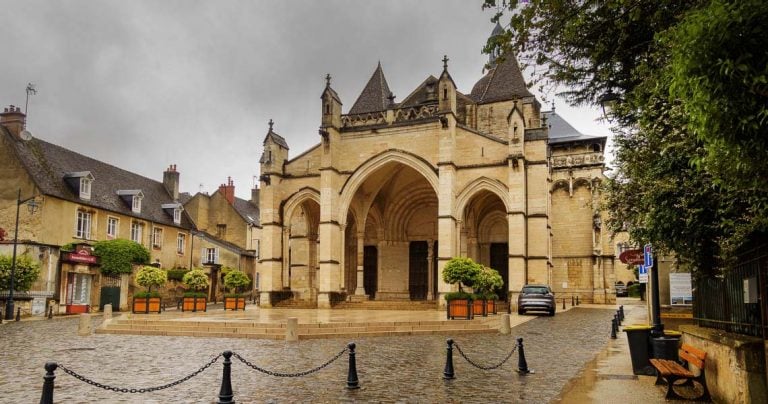Saint-Germain l’Auxerrois
Paris is a city of surprises. Like all surprises, they present when you least expect them, and they respect neither place nor time. Saint-Germain l’Auxerrois was one such experience that is hard to forget.
Pre-Dinner Stroll
As we often do, Ruth and I were enjoying a pre-dinner stroll with the Pont des Arts, sans padlocks, our intended destination. As we passed Saint-Germain l’Auxerrois, this beautiful organ sound wafted out the front door, which surprisingly was open. Surprisingly because this church usually closes at 7.00 pm.
Never ones to waste an opportunity to listen to a free organ recital, we decided to investigate. We just happened to walk into a wedding, albeit a small one, with about a dozen guests.
One of the great things about French churches is that visitors are always welcome, even during a religious ceremony. As long as you respect the service, you are free to move around the church. Possibly because of the late hour, we were the only tourists and had the whole church to ourselves.
The organist played long after the wedding guests had left, but he too eventually retired. Finally, the caretaker closed the front door and had to usher us out through the Vestry.
Louis XVI initially ordered the organ for La Sainte-Chapelle. Built by Francois-Henri Clicquot, Saint-Germain l’Auxerrois acquired it in 1791. A complete overhaul was carried out in 2005-2008 without any change to the historical materials such that 21 of the 33 stops still date from before the Revolution.

Short History
Located across from the Louvre, the residence of French Kings until the 19th century, Saint-Germain l’Auxerrois is known as the Paroisse des Rois de France.
The church is named in honour of the bishop Saint Germain d’Auxerre. Auxerre is a commune northwest of the Bourgogne region, a two-hour drive down the A6 from Paris. And, of course, the people of Auxerre are known as Auxerrois.
The church began in the fifth century and has been rebuilt several times, mixing Roman, Gothic and Renaissance styles. There is no reliable information on the period from the fifth to the twelfth century, but the base of the current bell tower seems to date back to the twelfth century.
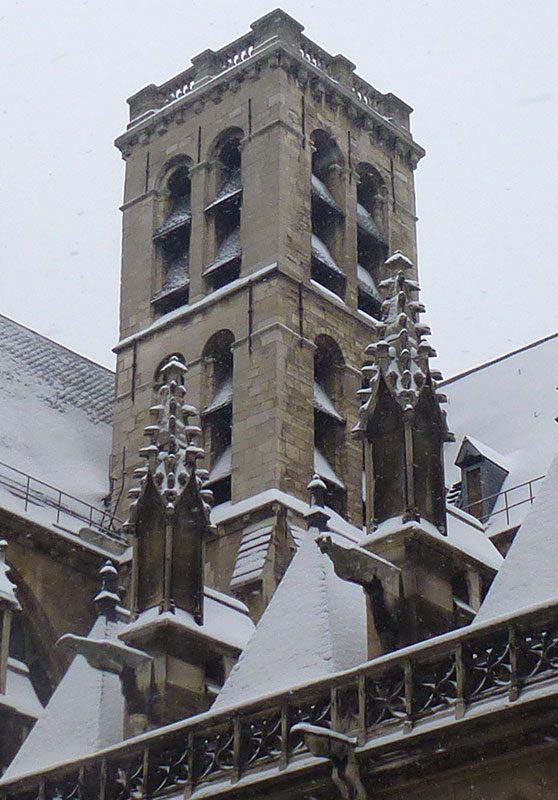
The Saint Bartholomew’s Day Massacre on August 24, 1572, marked the low point in the history of Saint-Germain l’Auxerrois and for what the church is most remembered. The sounding of the church’s bell signalled the beginning of the slaughter of tens of thousands of Huguenots, virtually decimating Protestantism in France. Today, Protestants make up only two per cent of the population of France, third after Catholics and Muslims.
Many confuse the landmark north tower between the Town Hall of the 1st Arrondissement and Saint-Germain l’Auxerrois and facing the Place du Louvre as the bell tower made famous by the Saint Bartholomew’s Day Massacre.
However, the north tower was added in 1858 and is part of the Town Hall. The Saint Bartholomew tower is set back from the main facade at the corner of the south transept.

When Haussmann began his task of modernising Paris, demolition threatened Saint-Germain l’Auxerrois.
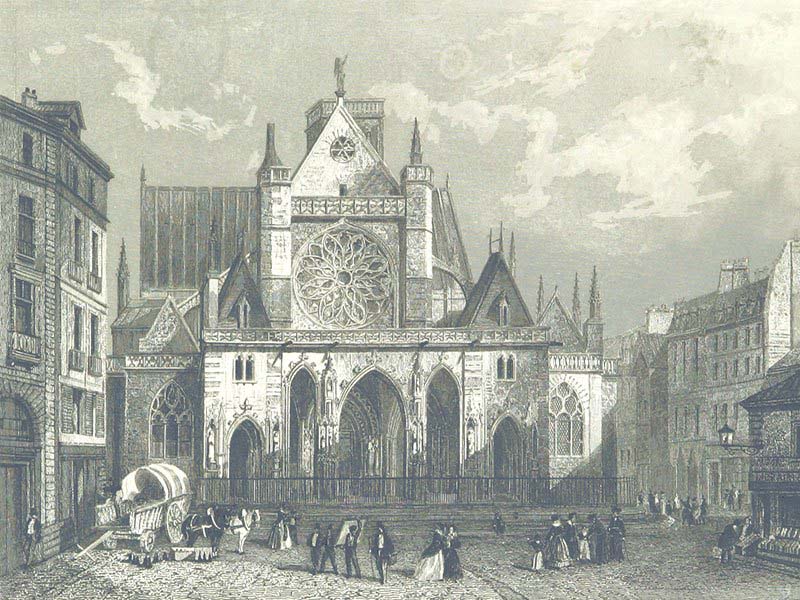
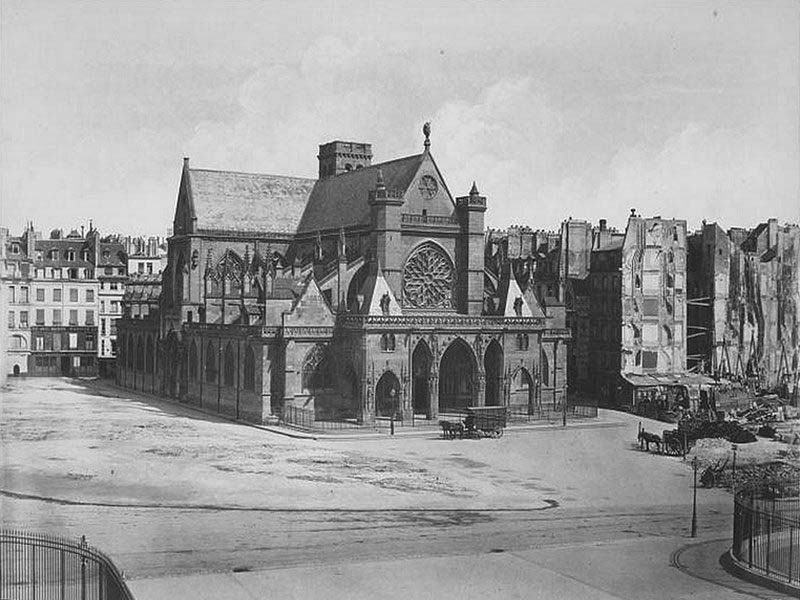
Instead, Haussmann suggested a town hall with an identical facade to the church and a gothic-style tower in between.
That tower is so noticeable today from La Rue de Rivoli. Interestingly, in his painting of the church in 1867, Monet did not include the new north tower, obviously knowing it was not part of the church.
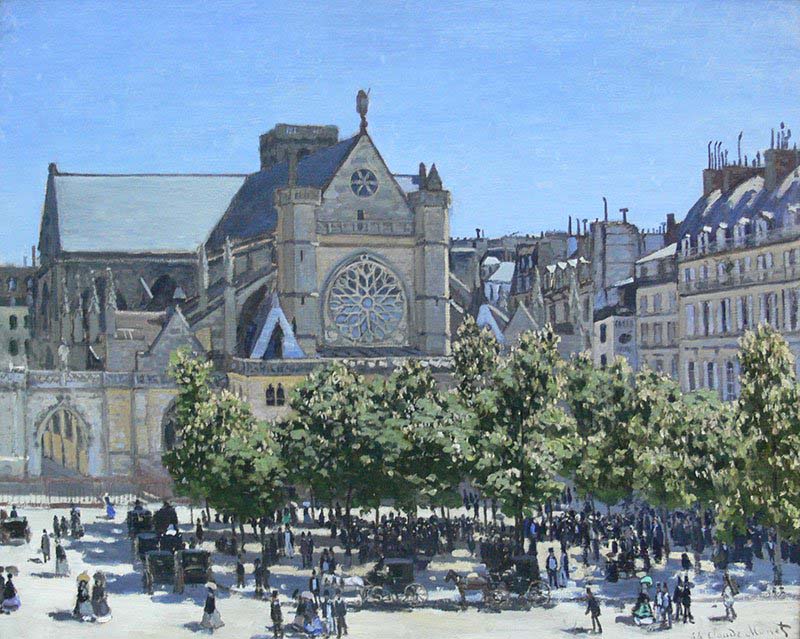
What to See
One of the advantages of viewing a Paris church during a religious ceremony is that most of the church is well-lit. Five centuries of consecutive architectural styles are evident: Romanesque tower and chevet, Gothic choir and gate, flamboyant nave and porch, and Renaissance stained-glass windows.
Several chapels surround the main worship area, each unique in origin and purpose. The Chapel of the Virgin is the old chapel of the parish community. The painting, The Coronation of the Blessed Virgin, surrounded by the choir of angels, is by Eugène Amaury-Duval, between 1845 and 1847. The Tree of Jesse provides a backdrop to the stone sculpture of the Virgin and Child, which is from the 14th century (Aube).

Two magnificent 16th-century altarpieces: one is Flemish in origin depicting the Passion of Christ.
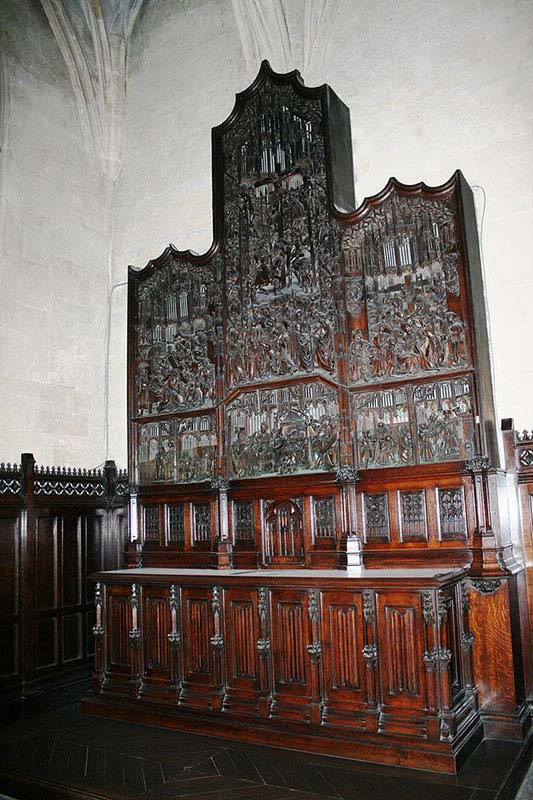
The other is from northern France and depicts the life of the Virgin.
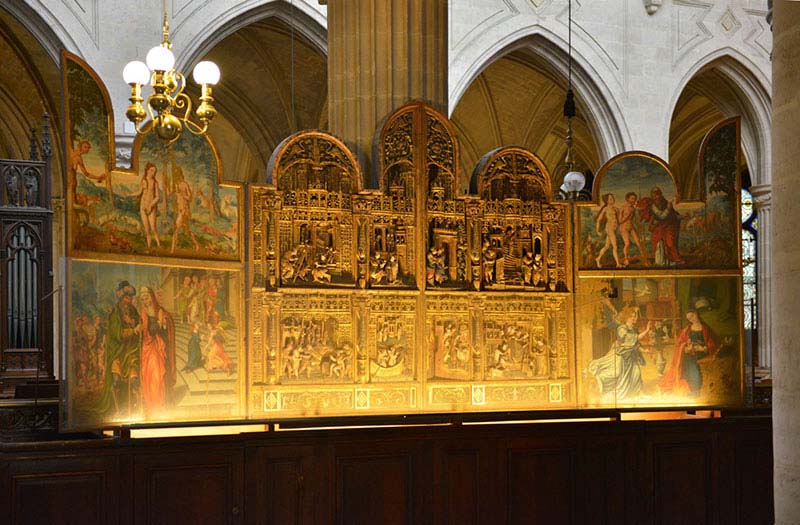
The intricately carved church warden’s pews are outstanding, based on a 17th-century Le Brun design. The pulpit, carved out of wood in the first half of the 17th-century, is attributed to François Mercier. Seventy-eight metres of stained glass from the Renaissance period augment the artificial light inside.

Of course, the ultimate way to visit Saint-Germain l’Auxerrois is through a drone’s eye, a growing marketing trend among the more affluent churches.
As surprises go, Saint-Germaine l’Auxerrois is hard to beat. It is one of the oldest churches in Paris and houses significant history, culture and art. Like most surprises, however, research usually comes after the event, leaving us a little ignorant of its value at the time. This is an excellent reason to return, better armed, next time we are in Paris.
Information
2 Pl. du Louvre, 75001 Paris
+33 1 42 60 13 96
[email protected]
Hours: 9:00 am to 7:00 pm (Daily)
Metro: Louvre Rivoli
Bus: 69.72 (Louvre Rivoli); 21, 27, 58, 70, 69, 85 (Pont-Neuf-Quai du Louvre)
saintgermainlauxerrois.fr/



